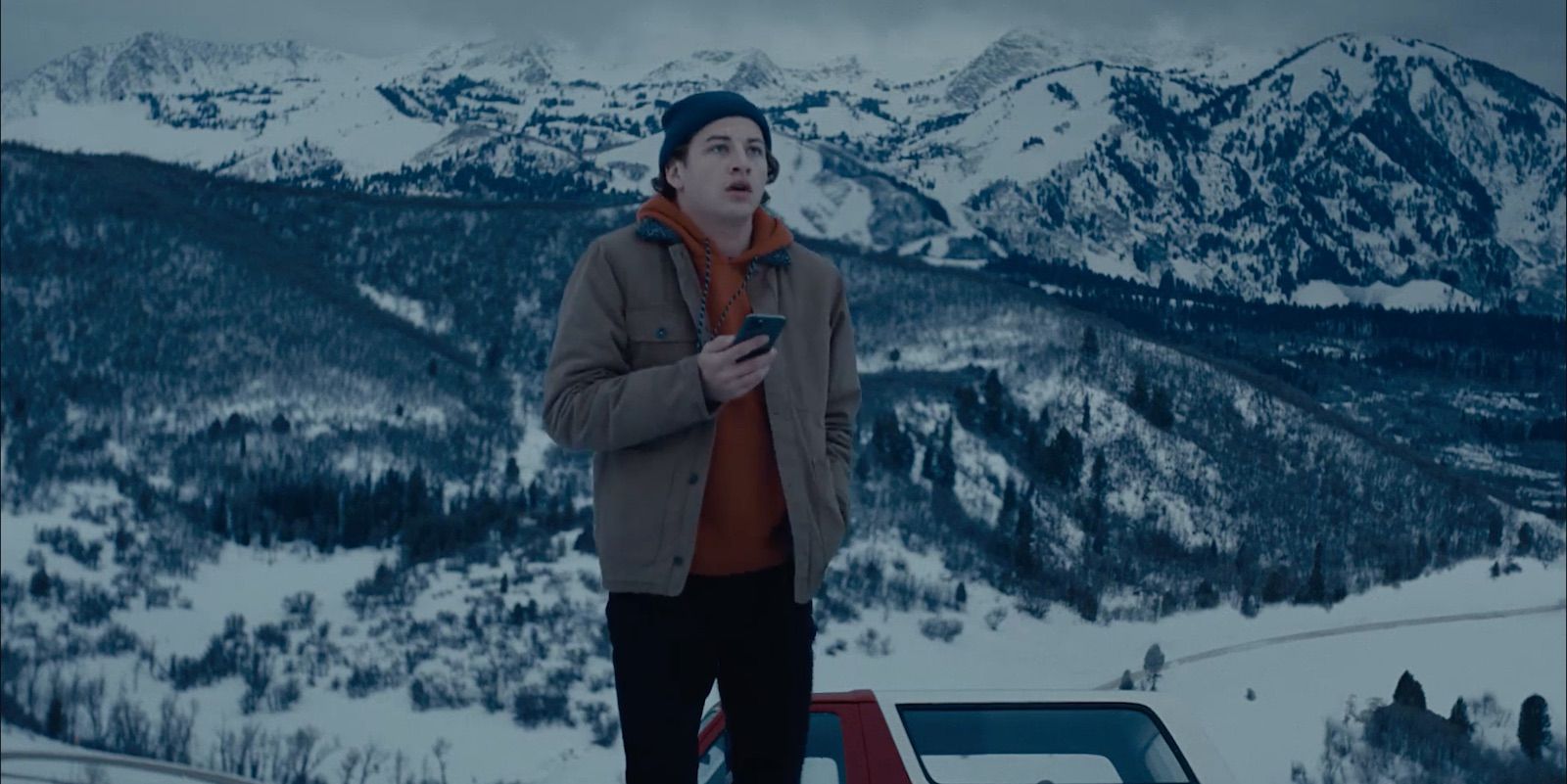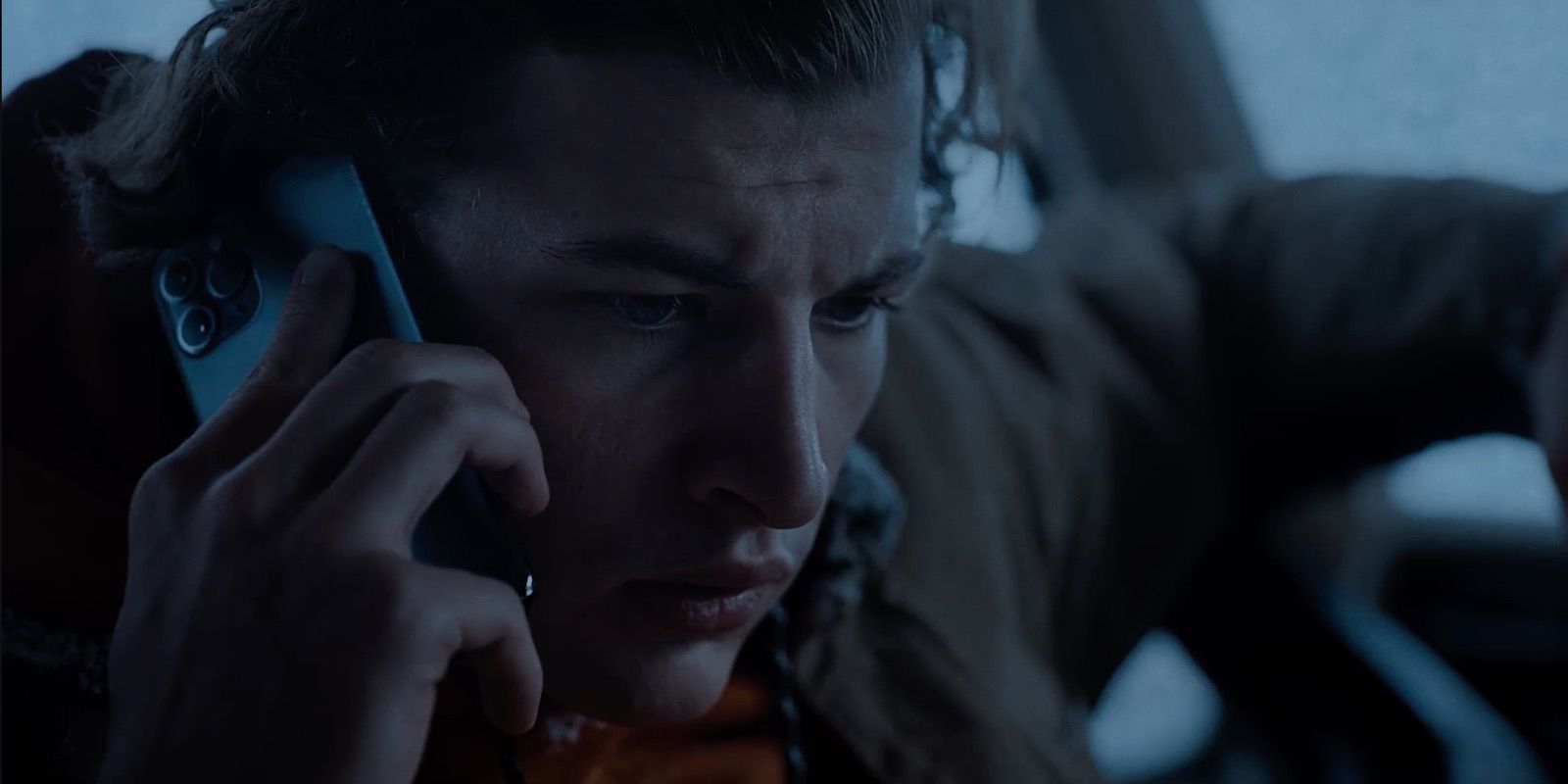When Quibi debuted earlier this year, the mobile-first platform included an innovative technology that enabled viewers to watch shows in either landscape or portrait orientations. Quibi's upcoming series Wireless takes that innovation one step further by presenting a story in two different formats: Hold your phone horizontally and the show is presented in the traditional, cinematic format we're used to; hold your phone vertically and the screen is overtaken by the phone screen of the show's main character, Andy Braddock, played by Tye Sheridan, as he attempts to survive after crashing his car off the side of a desolate road in the Rocky Mountains.
At a virtual event for the launch of the trailer for Wireless, which can be seen at the end of the article, Sheridan was joined by Wireless co-creator and director Zach Wechter and executive producer Steven Soderbergh for a discussion on the groundbreaking series and the technical challenges of making the show in two very different formats.
In explaining his vision for Wireless, Wechter said the show is meant to be "a real foray into addressing what seems like a gap in traditional storytelling. The way that we all experience life in the digital world is a huge part of our lives, and this story takes place largely there, and largely in the physical world too."
As a result, the project had two goals, and they dovetail with the reason Wechter wanted to make a show that could be experienced both through the main character's phone screen and as a traditionally filmed story. "The intention here is to tell a very new Gen-Z-focused survival thriller, and also examine our character's relationship to his phone," Wechter shared. "It's a personal drama in that way, that I think is acknowledging a new relationship that we all have in our lives."
"The narrative wholly takes place both in two settings: the Rocky Mountains and on [the main character's] phone screen. So, what we have is a conventional TV show and an all new mobile storytelling experience," Wechter continued. "So, it's really one singular experience that takes place from two perspectives, and a voyeuristic sort of insight into what our lead character is thinking."
Of course, shooting Wireless from those two perspectives opened up a set of unique challenges. "There were a lot of things we were trying to figure out because it's the first time anyone had really done anything like this," Sheridan observed.
"We really shot the equivalent of two feature films, not just two independent feature films but two films that had to dance together and work together in their timing and their performance had to match exactly," Wechter noted. "So, we would shoot our scenes, as much as possible, simultaneously to capture the cinematic and the phone perspective."
That often meant at the same time a camera was shooting a scene, Sheridan would also record the action on his phone, making him one of the main camera operators on the project. In addition, when Sheridan's character made FaceTime phone calls, he would act opposite the actor on the other end of the line in real time to keep things as authentic and natural as possible. Meanwhile, the production was able to film the phone's front and rear-facing camera simultaneously, so things could be synced more easily.
Soderbergh, who Wechter referred to as "the godfather of Wireless" and has previously made films on an iPhone such as Unsane and High Flying Bird, was enthusiastic about what the dual perspectives presented by the show entail for the way viewers watch filmed entertainment. "I think it’s going to be really fascinating for people as they go through the show to move back and forth between these two experiences," Soderbergh said. "I've gone through the show and on occasion, I've gone back to an episode having gone back and forth between landscape and portrait where I go, 'Okay, I’m just going to watch the landscape version now. Now I'm just going to watch his phone version to see what that's like.' To me, it was the farthest thing from a passive viewing experience that you could imagine."
Sheridan is sure this unique way of telling a story is bound to catch on. "I think [Wireless] will be something that paves the way for filmmakers in the future," he predicted. "I think this is a new way of telling stories that feels very personal to us right now."
Wechter concurred. "With Wireless, the medium really is the message. It's about our relationship to our devices. It's also meant to be watched on devices," he observed. "And the more and more interpersonal communication takes place on phones, the more these stories, I think, are going to be valid…. And I hope it's just opening the door for all sorts of filmmakers to continue exploring the possibility, the creative and artistic merits of telling [stories] meant to be watched on phones."
Check out the trailer below to get a taste of Wireless:
Wireless, co-written and directed by Zach Wechter and starring Tye Sheridan, premieres on Sept. 14 on Quibi.


